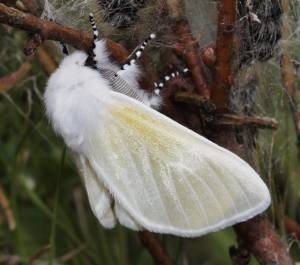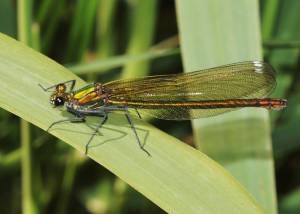Dr Phil Smith’s Wildlife Notes
May 2011
The driest spring on record continued during May with only two genuinely wet days. However, several periods of light patchy rain early in the month resulted in some Natterjack Toad activity, with 47 spawn strings at the southern end of Birkdale Green Beach. Unfortunately, most of the resulting tadpoles were lost as the shallow water soon dried up. A few Natterjacks also used the new scrapes provided by the National Trust at Formby Point. This is encouraging as it may herald a resurgence of this endangered amphibian in an area previously lacking breeding sites.
As it has become increasingly rare nationally, it was good to hear a distant Cuckoo on a trip to Ainsdale Sand Dunes National Nature Reserve on 3rd. Having learned how to imitate its call as a small boy, I couldn’t resist having a go and within seconds the male Cuckoo was flying overhead trying to locate and drive off its rival. Great views!
The real reason for our visit was to relocate one of our Red Data Book plants, the Shepherd’s-cress (Teesdalia nudicaulis). This rather insignificant-looking white-flowered annual has been known for many years on a strip of acid grassland near the railway line. Sure enough, it was still there in good numbers, so Patricia Lockwood and I decided to map its distribution and record the habitat in some detail. Further inquiries revealed that this plant was quite widespread in the 19th century but has spectacularly declined to the point where the Ainsdale population is probably the last in the former Lancashire. Likely reasons for this are highlighted in research conducted in the 1960s. It was found that Shepherd’s-cress has short-lived seeds that mostly germinate in the year of production close to the parent plant. Also, they need disturbed ground for seedlings to become established. There is no seed bank in the soil, so even a short period of unsuitable conditions, such as overgrowth of coarse vegetation, will often result in local extinction. Fortunately the Ainsdale colony has survived due to the activities of Rabbits and occasional ground disturbance by reserve staff and volunteers.
Another of our botanical studies led to the discovery of two new plants for me: the very hairy, pink-flowered Knotted Clover (Trifolium striatum) and the tiny yellow Slender Trefoil (Trifolium micranthum). We spotted them on the grass verges of Kenilworth Road, Ainsdale, where my 1999 survey had produced a high total of 59 different higher plants. Repeating the study produced a gratifying increase to 83 species, including lots of the nationally rare Smooth Rupture-wort (Herniaria glabra), which has been known here since 1988. This plant has always been assumed to be a garden-escape at Ainsdale, its British headquarters being in the Breckland of East Anglia. However, I recently found it listed with other wildflowers for the Southport area in a book published as long ago as 1831, so perhaps its status should be reviewed.
Cool, windy conditions for most of the month inhibited insect activity but warmer weather in the last few days resulted in a spectacular emergence of White Satin moths (Leucoma salicis) at Ainsdale Sandhills Local Nature Reserve. In addition to hundreds of these large startlingly white moths, it was easy to find all the other life-stages: eggs, the brilliantly-coloured hairy caterpillars and pupae in protective silk nets on Creeping Willow. This is an irruptive species, prone to sudden increases. I haven’t seen so many since the early 1970s.

The last day of the month found me at Alt Bridge on Downholland Brook to look for one of our most beautiful damselflies, the Banded Demoiselle (Calopteryx splendens). Several were easily found in the marginal vegetation, the iridescent blue males being outshone for once by the stunning metallic-bronze females.

